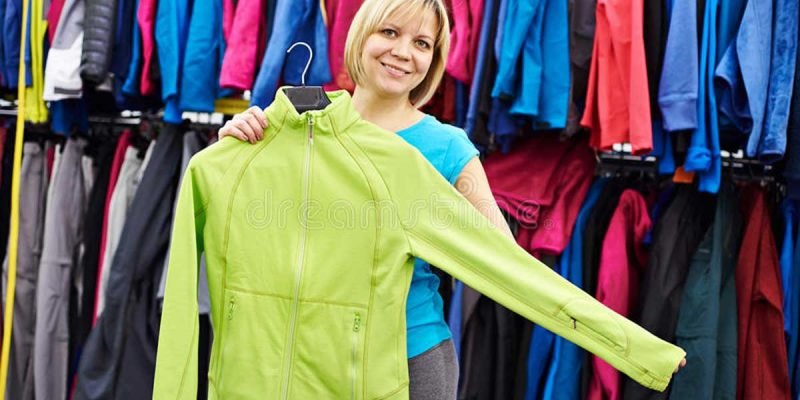Many people make the mistake of thinking that the most comfortable clothes they wear at home are also the best clothing choices for exercising. But once you start working out, you’ll realize that there are certain drawbacks to wearing loose T-shirts and sweatpants to the gym.
Safety and performance are both as important as comfort during a workout, so you need to make sure that you choose the right apparel for the job.
If you’re not sure what to look for in sportswear, here are four tips that can come in handy when you visit sports shops in Qatar:
1. Learn about fabrics.
One of the most important aspects of athleticwear is the material it is made from. The kind of fabric determines whether it:
- Can wick sweat
- Offers enough muscle support
- Is lightweight and breathable
- Provides maximum comfort
There are so many types of materials to choose from, but a handful of them are most suitable for specific situations.
Spandex, for example, is great for activities that require agility and strenuous movement. It can stretch by as much as 100 percent of its original size. This sportswear fabric is also breathable, can wick sweat, and dries quickly. Overall, it is an excellent choice of feature-rich and malleable material for a fraction of the cost.
Its only disadvantage is that it can be challenging to embroider and cannot hold stitched designs well. This is probably the reason why most Spandex sportswear you’ll find when you go shopping in Doha has printed rather than stitched logos.
Other materials commonly used in sportswear are:
Polyester
Another well-known material used in sportswear is polyester. This is practically cloth made from plastic fibers, which is why it is wrinkle-resistant, lightweight, breathable, and durable. However, it is non-absorbent, which means sweat will dry on its own outside the material.
Microfiber
As the name suggests, microfiber is a material made with fine, tiny fiber threads. These have a maximum linear density of one denier. To give you a clearer picture, this practically makes microfiber 100 times thinner than a human hair.
Microfiber is often used for gym wear, tracksuits, and towels because of its non-abrasive and highly absorbent nature.
Bamboo fiber
Bamboo fiber is one of the softest moisture-wicking sportswear fabrics available today. This natural fabric comes from bamboo pulp and is known for its anti-static and light nature.
Thanks to its moisture-wicking ability, bamboo fiber is an odorless material, making it the perfect choice for heavy-sweat activities. It can also provide sufficient UV ray protection, so you won’t have to worry about sunburn even as you exercise under the sun for longer periods.
Nylon
Another synthetic fiber commonly used for sportswear is nylon. Considered the first commercially viable material often used to make women’s stockings, this fabric is now deemed an excellent fabric for different kinds of tracksuits, gym wear, and wind runners.
Nylon is a great choice because it:
- Dries quickly
- Can resist mildew
- Is highly stretchable
Plus, it is also incredibly breathable, allowing cool air to reach the skin. Nylon also wicks sweat into the fabric’s surface effectively to make you feel more comfortable while you exercise.
2. Consider your workout regimen.
There’s no universal sportswear that works for every type of exercise or workout regimen, so make sure you consider the activity when shopping for this type of apparel.
For example, if you’re doing high-impact exercises, you’ll need a sports bra that offers better support than when you’re doing yoga.
Bikers have a different length requirement for their shorts and don’t do well with a pair of joggers. Similarly, weightlifters need clothes that won’t get in the way of their movement.
While some styles of athleticwear could work with several workouts, considering your routines when shopping for sports apparel will help you make a sound choice.
3. Don’t skip the sports bra.
A popular sports brand conducted a talk on bra education during International Women’s Day, highlighting the importance of wearing the appropriate sports bra for comfort and support while working out.
Since the breast tissue is very sensitive and fragile, you need a sports bra that can minimize breast movement. Here are some ways you can test this:
- Put a finger along the band area between your skin and your bra. There should be minimal space as the bra stretches out to take the shape of your fingers.
- Raise both your hands to see if the band moves up. If it does, you need to pick a different one that’s a size smaller.
- Pull the bra strap up from your shoulders to your ears. If it comes close to your ears, you can either adjust the straps or go one size down.
If you can’t try it out, you need to make sure that you take precise measurements of your bust and underbust. Use this when communicating with store personnel about the size of the sports bra you wish to buy.
Once you find one that perfectly fits, use it as a reference when buying similar apparel in the future.
Of course, don’t forget to consider the type of workout you do.
If you’re sticking to low-impact routines, you can have more liberty with choosing sports bra designs (e.g., bralette-style works for cycling or yoga). For high-impact activities that keep your feet off the ground, like running or jumping, you should stick with a snug-fitting sports bra.
4. Ensure mobility when deciding on cuts.
Mobility is crucial in every workout, but it can be more so for specific activities. Either way, you need to ensure that your athleticwear won’t limit or get in the way of your movements.
This is why checking apparel cuts is important. In most cases, simpler ones are better. Anything with too many straps or cutouts can get in the way (not to mention, they can be a bit distracting).
In many situations, sports bras should be enough for your top. However, if you feel like covering up, you should go with mid-rib tops. Breathable tank tops are great for some low-impact activities like pole, pilates, or yoga as well, so long as you’re not drowning in fabric.
The Takeaway
Buying sportswear is vital for achieving optimum performance during a workout. These tips should help you choose the appropriate one for your next exercise.


















Comments